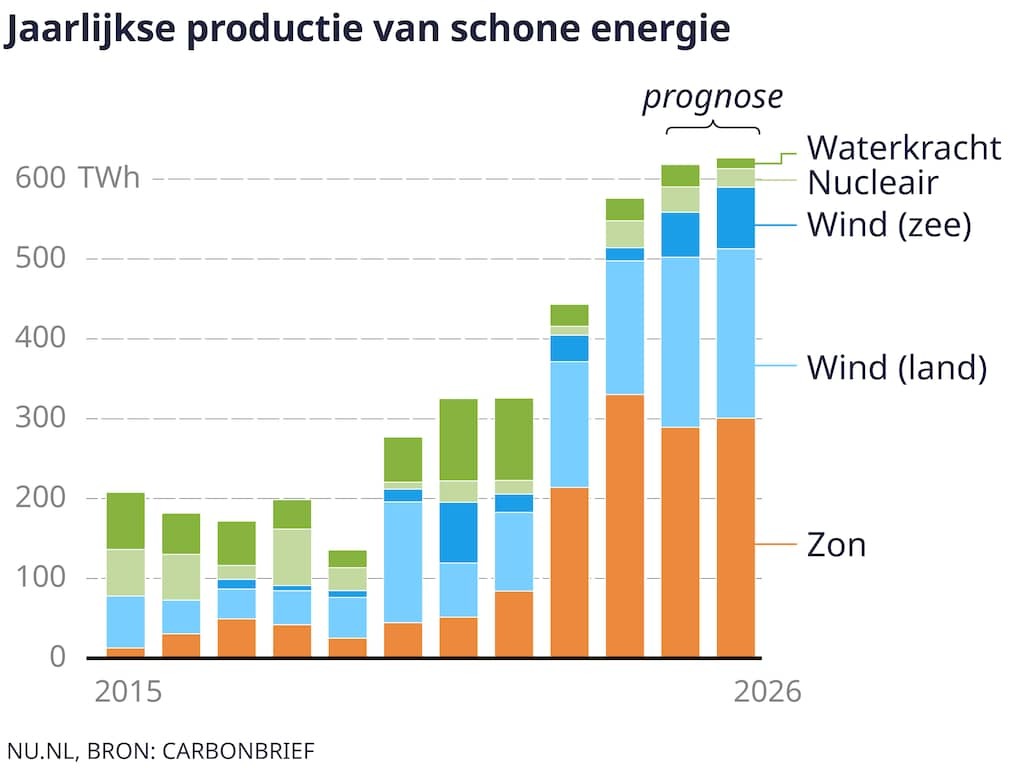
Is the world’s largest polluter permanently reducing emissions? China may have reached a peak in CO2 emissions in the past year. Experts see it as a promising development in the global transition and call it “a turning point.”
After decades of significant increase, China’s CO2 emissions appear to be decreasing (slightly) for the first time. This represents a 1 percent decrease since March 2024, according to analysts at the Centre for Research on Energy and Clean Air (CREA).
It is too early to state that this decrease will continue, but climate experts are cautiously enthusiastic. This could mean that Chinese emissions will now begin a downward trend. China aims to peak emissions before 2030, so this would be much sooner than expected. The country aims to be climate neutral by 2060.
China (1.4 billion inhabitants) has made an unprecedented contribution to global greenhouse gas emissions in a relatively short period, accounting for one-third of global CO2 emissions. The graph below shows how Chinese emissions have developed in recent years. In 2023, the country emitted 12 billion tons of the greenhouse gas, compared to 5 billion tons in the US and 2.5 billion tons in Europe.

Green Beats Fossil Fuels
It’s not the first time emissions have declined, says China analyst Belinda Schäpe of research institute CREA. “China’s emissions have fallen four times before, but each time as a result of an economic or financial crisis.” It is the first time that emissions are falling while the economy is booming and the demand for electricity in the country is increasing.
This development is mainly due to the enormous growth of green energy technology, notes Daan Walter of energy think tank Ember. Think of solar panels, wind turbines, and nuclear power plants. Renewable energy is growing faster than the demand for electricity. As a result, China is becoming less dependent on fossil fuels such as coal for electricity.
For years, China has burned enormous amounts of coal to keep the manufacturing industry running at full speed and to provide electricity to Chinese megacities. It is also one of the few countries where CO2 emissions increased instead of decreased in the aftermath of the corona crisis.
That same country is now a leader in producing and installing solar panels and wind turbines. Last year alone, the Chinese installed more than 350 gigawatts of renewable energy, accounting for 60 percent of global capacity. China is also leading the way with electric cars and batteries.
For China, climate is not necessarily the motivation, although the country is also hard hit by the consequences. China’s motivations to invest in clean energy are primarily economic and geopolitical. The country wants to be less dependent on energy imports and be at the forefront of green technology, says Schäpe. This is especially true now that there is less focus on the US, thanks to Trump’s anti-climate mentality and trade wars.

China is a Harbinger for the Rest
Despite the positive signs, nothing is set in stone. China is still building new coal-fired power plants and may emit more if the economy recovers. “A few large orders for the Chinese steel industry and emissions may temporarily increase again,” Walter outlines that scenario, although he considers that chance very small. “What is certain is that structural growth is really over now.”
Because China is responsible for a third of global emissions, the country can make a big difference. It could mean a turning point in the global impact on the climate, even if emissions in other countries still grow. “If China peaks, the rest of the world peaks,” says Schäpe.
According to Walter, this will ensure that ever-increasing global emissions will decline within the next two years. But to prevent the worst consequences of global warming, it will still have to go much faster.